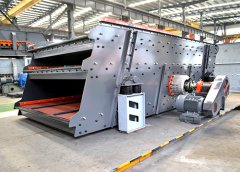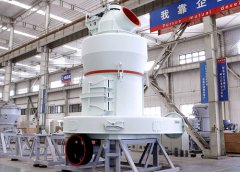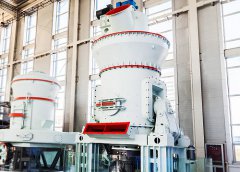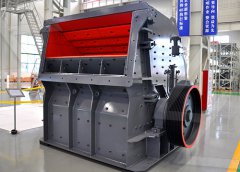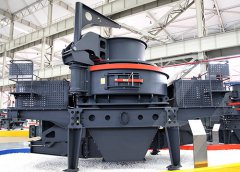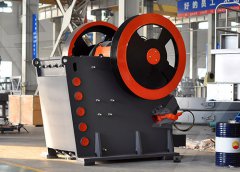
A comparison of alkali and acid methods for the extraction of gold
High gold extraction for both RM 2 and RM 3 (85-90%) is achieved using only 0.55 kg/t, 2.2-3 kg/t NH3 and 6-10 kg/t NaOH (to achieve the required pH 11). A xanthate collector with cyclic alcohol frother (e.g. pine oil) together with dithiophosphate can be very effective at alkaline pH (lime regulated). Carbonaceous A systematic review of sustainable gold extraction from raw ores
احصل على السعر
Gold extraction
Gold extraction is the extraction of gold from dilute ores using a combination of chemical processes. Gold mining produces about 3600 tons annually, and another 300 tons is produced from recycling. Since the 20th century, gold has been principally extracted in a cyanide process by leaching the ore with cyanide solution. The gold may then be further refined by Various factors that affect gold(I) extraction (including concentration of ionic liquids, equilibrium pH, concentration of the modifier tributyl phosphate (TBP), Equilibrium and mechanism studies of gold(I) extraction
احصل على السعر
Gold Extraction an overview ScienceDirect Topics
The effect of pH value on gold extraction for various ore types is shown in Figure 28.4. Greatly increasing pH value has a beneficial effect on gold extraction for both oxide and The reaction of gold with glycine at neutral to alkaline pH can form a gold glycinate complex using a pH modifier such as caustic or lime, according Eq. (1) : (1) 4 A Gold extraction from paleochannel ores using an aerated
احصل على السعر
A comparison of alkali and acid methods for the extraction of gold
The natural advantages claimed for bromine are rapid extraction, non-toxicity and adaptability to a wide range of solution pH values (Prasad et al., 1991). 28 Citations 197 Altmetric Metrics Abstract Materials capable of extracting gold from complex sources, especially electronic waste (e-waste), are needed for gold Highly efficient and selective extraction of gold by reduced
احصل على السعر
Leaching and recovery of gold from ore in cyanide-free glycine
cyanide-free alkaline glycine media. Optimal leaching parameters for gold extraction were evaluated using re-sponse surface methodology. The investigated parameter range was cyanide-free alkaline glycine media. Optimal leaching parameters for gold extraction were evaluated using re-sponse surface methodology. The investigated parameter range was 0.5–2 M for glycine concentration, pH of 10–12 and temperatures of 23–60 °C, with constant leaching time (24 h) and solid/liquid ratio (100 g/L). BasedLeaching and recovery of gold from ore in cyanide-free glycine media
احصل على السعر
Possibilities for the Environmental Processing of Gold-Bearing
Leaching is a technique of extraction metallurgy and consists of the application of acid or alkaline solutions which come into direct contact with the precious metal-containing material. The decisive parameters in leaching are the reduction potential, the pH of the solution, and the temperature, which are usually adjusted to optimize the That's to say, when gold comes in connect with NBS solution, the gold surface is activated and the oxidation of neutral gold atom to trivalent Au (III) occurs, which convert gold into K[AuBr 4]. In the gold leaching experiments from ore, no matter acidic or alkaline the initial pH is adjusted to, the finial pH will be close to 6 in Figure 3 c, as the Eco-friendly and rapid extraction of gold by in-situ catalytic
احصل على السعر
Minerals Free Full-Text Extraction of Gold and Copper from
This study presents the novel idea of a cyanide-free leaching method, i.e., glycine-ammonia leaching in the presence of permanganate, to treat a low-grade and copper-bearing gold tailing. Ammonia played a key role as a pH modifier, lixiviant and potential catalyst (as cupric ammine) in this study. Replacing ammonia with other pH Results: gold extraction was a) 16.4%, b) 63.4%, c) 67.5% and d) 98%. Case 9 Thiocyanide was used to dissolve gold from gold ore associated with quartz (Yeboah, 2019). ® Leaching solution: NaSCN was used as lixiviant agent, while Fe(III) was applied as oxidant (gold extraction remaining the same, but reagents consume A systematic review of sustainable gold extraction from raw
احصل على السعر
Use of amino acids for gold dissolution Request PDF
Request PDF On Mar 20, 2018, C G Perea and others published Use of amino acids for gold dissolution Find, read and cite all the research you need on ResearchGateGold leaching i n alkaline thiourea shows better selectivity than acidic thiourea leaching, which also deserves attention (Zheng et al., 2006). B ase metals such as Pb, Zn, and Cu are(PDF) A systematic review of gold extraction: Fundamentals
احصل على السعر
A novel non-cyanide extraction method of gold for high As-Sb
2.2. Procedures and analysis2.2.1. As-and Sb-oxidation reaction mechanism analysis. Owing to Au-extraction efficiency mainly based on the oxidative decomposition of As-and Sb-minerals and the Mn-oxide ore affected the lattice failure of sulphide minerals, hence, it focused on the As-and Sb-dissolution by the Mn-oxide pre gold by CIL was shown to be feasible, and it improved gold extraction by 15%, but no effect was observed for copper extraction. Percentages of 76.5% gold and 64.5% copper were extracted in 48 h at 20 g/L glycine, 10 kg/t permanganate, 20 g/L carbon, pH 10.5 and 30% solids. Higher extractionsExtraction of Gold and Copper from Flotation Tailings Using
احصل على السعر
Extraction of Gold and Copper from Flotation Tailings Using
marized in Figure2, obvious gold dissolution could also be realized using gold-foils at a higher glycine concentration, pH and temperature, or if additional oxidant was added [12–14]. The typical reaction of gold leaching using glycine solution in an alkaline environment with ambient oxygen ingress can be written as the Reaction (2) [8].The direct extraction of gold from alkaline cyanide solution with dibutyl sulfoxide and n-octanol diluted in kerosene was investigated. It has been indicated that the gold extraction percentage increases by increasing dibutyl sulfoxide concentration, n-octanol concentration, and organic-to-aqueous (O/A) phase ratio, but decreases with the Solvent Extraction of Gold(I) Directly from Alkaline Cyanide
احصل على السعر
The leaching of gold, silver and their alloys in alkaline glycine
The leaching of gold and silver in a pH modified glycine solution in the presence of hydrogen peroxide was investigated. It was found that this lixiviant system can dissolve gold and/or silver under neutral and alkaline conditions at ambient to moderately elevated temperatures (23–60 °C). The gold leaching rate in solutions containing 0.5 M Effect of glycine on gold extraction from gold oxide ore by Glyleach™ process at leach conditions of glycine, 30% solid content, 100% −75 μm, pH 10.5, 1.0 g/L permanganate at room temperature. (For interpretation of the references to colour in this figure legend, the reader is referred to the web version of this article.)Gold leaching from oxide ores in alkaline glycine solutions in the
احصل على السعر
Recovery of cyanide in the extraction of gold ScienceDirect
There would be a 20% increase in the recovery of cyanide by removing it as soon as the gold has dissolved and before carbon adsorption. The presence of a cyanide recovery circuit would enable leaching to be conducted at a pH of around 9 instead of the conventional 10.5, with a consequential halving in consumption of pH modifying reagents.Optimized gold-extraction efficiency (93.15%) of gold-bearing flotation concentrate was achieved under the following conditions: a concentration of thiocyanate, glycine and oxidant Fe 3+ at 0.6 mol/dm 3, 5 g/dm 3 and 0.05 mol/dm 3, respectively; stirring speed at 600 rpm; pH at 2; temperature at 298 K; leaching time of 3 h and a liquid-solidA systematic review of gold extraction: Fundamentals
احصل على السعر
Gold recovery from refractory gold concentrates by pressure
grains, which caused low sulfide oxidation and low gold extraction (Li et al., 2006). Further, POX in an alkaline environment is expensive owing to the requirement of heavy consumption of NaOH or Na 2 CO 3, so it is not suitable for practical applications. Compared with that is an alkaline environment,Response surface methodology (RSM) was applied to explore the role of potassium ferrocyanide in gold leaching; optimized results showed that the gold recovery reached 67.74% in a high-alkalineGold extraction from paleochannel ores using an aerated alkaline
احصل على السعر
ScienceDirect Gold extraction from thiosulfate solution using
Extraction test were conducted from a 1.0×10 −3 mol/L gold pregnant solution with different concentrations of (NH 4) 2 S 2 O 3 by using 0.18 mol/L TOMAC. The (NH 4) 2 S 2 O 3 concentration ranged from 0.2 to 1.0 mol/L. The results presented in Fig. 2 indicate that the equilibrium time required was 1.8, 0.9 and 0.6 ks when the (NH 4) 2 S 2 Solvent Extraction of Gold(III) with Diethyl Carbonate Stijn Raiguel, Lukas Gijsemans, Arne Van den Bossche, Bieke Onghena, and Koen Binnemans * Cite This: ACS Sustainable Chem. Eng. 2020, 8(PDF) Solvent Extraction of Gold(III) with Diethyl Carbonate
احصل على السعر
Kinetic Investigation and Dissolution Behavior of Cyanide Alternative
Similar to bromine, also hydrochloric acid has a low boiling point (45 °C), which would lead to a reagent loss and a slowing down of gold extraction. Figure 11
احصل على السعر


